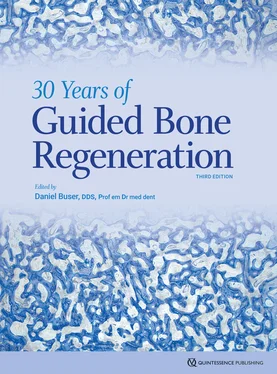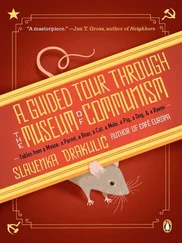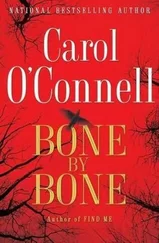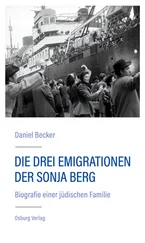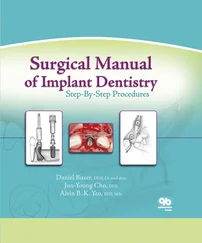Last but not least, I also cordially thank Bryn Grisham and Marieke Zaffron of Quintessence Publishing for their excellent collaboration to realize this book. The quality work and the quality printing of Quintessence was again superb and is highly appreciated. It reflects almost 30 years of close collaboration with Quintessence Publishing, both in Berlin and in Chicago. I thank Horst Wolfgang Haase, Christian W. Haase, as well as Alexander Ammann for this excellent collaboration over so many years, which was based on trust, respect, and friendship.
Contributors
Mauricio G. Araújo, DDS, MSc, PhD
Head of the Research Group in Periodontics and Implant Dentistry
Department of Dentistry
State University of Maringá
Maringá, Brazil
Thomas von Arx, DDS, Prof Dr med dent
Deputy Clinic Director
Department of Oral Surgery and Stomatology
School of Dental Medicine
Faculty of Medicine
University of Bern
Bern, Switzerland
Maria B. Asparuhova, PhD
Research Group Leader
Laboratory of Oral Cell Biology
Dental Research Center
School of Dental Medicine
Faculty of Medicine
University of Bern
Bern, Switzerland
Urs C. Belser, DMD, Prof em Dr med dent
Professor Emeritus
School of Dental Medicine
University of Geneva
Geneva, Switzerland
Dieter D. Bosshardt, MSc, PhD
Professor
Robert K. Schenk Laboratory of Oral Histology
School of Dental Medicine
Faculty of Medicine
University of Bern
Bern, Switzerland
Vedrana Braut, DDS, Dr med dent
Research Collaborator
Department of Oral Surgery and Stomatology
School of Dental Medicine
Faculty of Medicine
University of Bern
Bern, Switzerland
Private Practice
Matulji, Croatia
Daniel Buser, DDS, Prof em Dr med dent
Professor Emeritus
School of Dental Medicine
University of Bern
Bern, Switzerland
Vivianne Chappuis, DDS, Dr med dent
Professor
Department of Oral Surgery and Stomatology
School of Dental Medicine
Faculty of Medicine
University of Bern
Bern, Switzerland
Stephen T. Chen, MDSc, PhD
Clinical Associate Professor
Department of Periodontics
Melbourne Dental School
The University of Melbourne
Parkville, Australia
Francesco D’Aiuto, DMD, M clin Dent, PhD
Professor and Chair
Periodontology Unit
Eastman Dental Institute
University College London
London, United Kingdom
Adam Hamilton, BDSc, DCD
Director of the Division of Regenerative and Implant Sciences
Department of Restorative Dentistry and Biomaterials Sciences
School of Dental Medicine
Harvard University
Cambridge, Massachusetts
Simone F. M. Janner, DDS, PD Dr med dent
Senior Physician
Department of Oral Surgery and Stomatology
School of Dental Medicine
Faculty of Medicine
University of Bern
Bern, Switzerland
Simon S. Jensen, DDS, Dr odont
Professor
Section of Oral Biology and Immunopathology
Department of Odontology
Faculty of Health and Medical Sciences
University of Copenhagen
Professor
Department of Oral and Maxillofacial Surgery
Centre of Head and Orthopedics
Copenhagen University Hospital
Copenhagen, Denmark
Sascha A. Jovanovic, DDS, MS
Founder and Academic Chairman
gIDE Institute
Los Angeles, California
Alberto Monje, DDS, MS, PhD
Adjunct Clinical Assistant Professor
Department of Periodontics and Oral Medicine
School of Dentistry
University of Michigan
Ann Arbor, Michigan
Assistant Lecturer
Department of Periodontology
Faculty of Dentistry
Universitat Internacional de Catalunya
Barcelona, Spain
Federico Moreno, Lic Odont, M Clin Dent
Clinical Lecturer
Periodontology Unit
Eastman Dental Institute
University College London
Private Practice
London, United Kingdom
Ausra Ramanauskaite, DDS, Dr med dent, PhD
Assistant Professor
Department of Oral Surgery and Implantology
Faculty of Medicine
Goethe University
Center for Dentistry and Oral Medicine (Carolinum)
Frankfurt, Germany
Isabella Rocchietta, DDS, MSc
Honorary Senior Research Associate
Periodontology Unit
Eastman Dental Institute
University College London
Private Practice
London, United Kingdom
Frank Schwarz, Prof Dr med dent
Professor and Chairman
Department of Oral Surgery and Implantology
Faculty of Medicine
Goethe University
Center for Dentistry and Oral Medicine (Carolinum)
Frankfurt, Germany
Istvan Urban, DMD, MD, PhD
Assistant Professor
Department of Restorative Dentistry
School of Dentistry
Loma Linda University
Loma Linda, California
Associate Professor
Department of Periodontics and Oral Medicine
School of Dentistry
University of Michigan
Ann Arbor, Michigan
1
The Development of Guided Bone Regeneration Over the Past 30 Years
Daniel Buser, DDS, Dr med dent
Modern implant dentistry based on the concept of osseointegration recently celebrated its 50th birthday. 1 The tremendous progress made in the rehabilitation of fully and partially edentulous patients is based on fundamental experimental studies performed by two research teams. One team was located in Sweden and headed by Prof P-I Brånemark from the University of Gothenburg; the other was located in Switzerland and headed by Prof André Schroeder from the University of Bern. In the late 1960s and 1970s, the two research groups independently published landmark papers describing the phenomenon of osseointegrated titanium implants. 2 – 4 An osseointegrated implant was characterized by direct apposition of living bone to the implant surface. 5 – 7
In the early phase of this development, several prerequisites were identified for osseointegration to be achieved. 2 , 3 Some of these have been revised over the past 50 years; others are still considered important. In order to achieve osseointegration, the implant must be placed using a low-trauma surgical technique to avoid overheating the bone during preparation of a precise implant bed, and the implant must be inserted with sufficient primary stability. 5 , 8 When these clinical guidelines are followed, successful osseointegration will predictably occur for nonsubmerged titanium implants (single-stage procedure) as well as for submerged titanium implants (two-stage procedure), as demonstrated in comparative experimental studies. 9 , 10
When clinical testing of osseointegrated implants first began, the majority of treated patients were fully edentulous. Promising results were reported in retrospective studies. 11 – 13 Encouraged, clinicians increasingly began using osseointegrated implants in partially edentulous patients, and the first reports on this utilization were published in the late 1980s and early 1990s with promising short-term results by various groups. 14 – 18 As a consequence, single-tooth gaps and distal extension situations have become more and more common indications for implant therapy in daily practice. Today, these practices dominate in many clinical centers. 19 – 21
One of the most important prerequisites for achieving and maintaining successful osseointegration is the presence of a sufficient volume of healthy bone at the recipient site. This includes not only sufficient bone height to allow the placement of an implant of adequate length, but also a ridge with sufficient crest width. Clinical studies in the 1980s and 1990s showed that osseointegrated implants lacking a buccal bone wall at the time of implant placement had an increased rate of soft tissue complications and/or a compromised long-term prognosis. 22 , 23 To avoid increased rates of implant complications and failures, these studies suggested that potential implant recipient sites with insufficient bone volume should either be considered local contraindications for implant placement or should be locally augmented with an appropriate surgical procedure to regenerate the local bone deficiency.
Читать дальше
